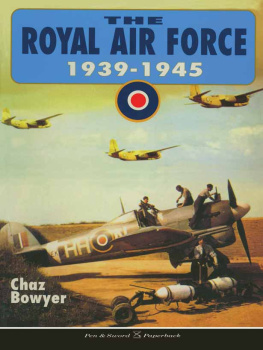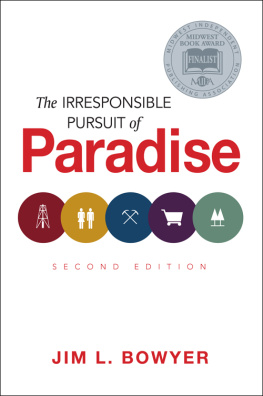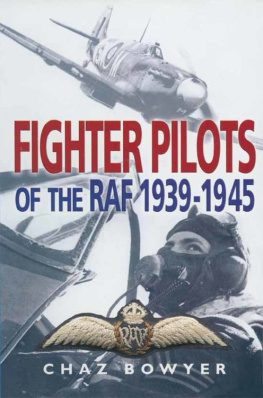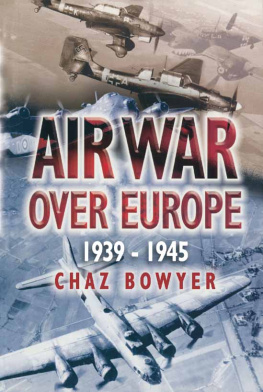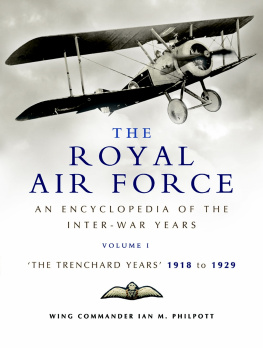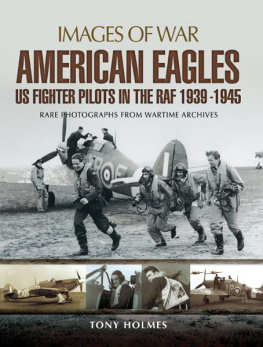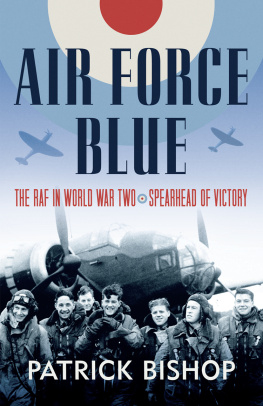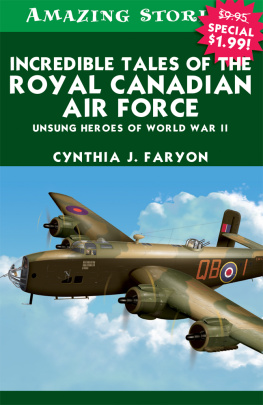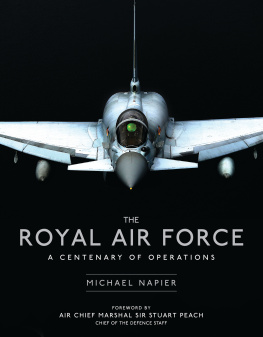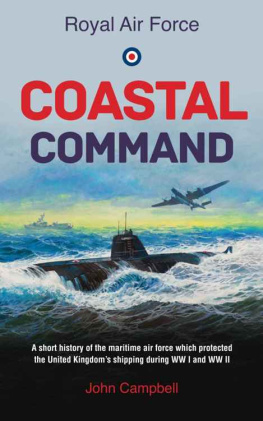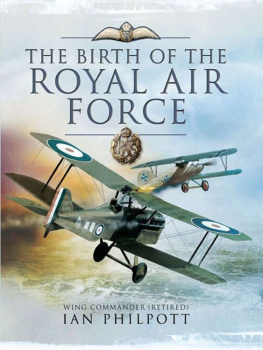Bowyer - The Royal Air Force, 1939-1945
Here you can read online Bowyer - The Royal Air Force, 1939-1945 full text of the book (entire story) in english for free. Download pdf and epub, get meaning, cover and reviews about this ebook. City: Barnsley, year: 1996, publisher: Pen and Sword, genre: Romance novel. Description of the work, (preface) as well as reviews are available. Best literature library LitArk.com created for fans of good reading and offers a wide selection of genres:
Romance novel
Science fiction
Adventure
Detective
Science
History
Home and family
Prose
Art
Politics
Computer
Non-fiction
Religion
Business
Children
Humor
Choose a favorite category and find really read worthwhile books. Enjoy immersion in the world of imagination, feel the emotions of the characters or learn something new for yourself, make an fascinating discovery.
- Book:The Royal Air Force, 1939-1945
- Author:
- Publisher:Pen and Sword
- Genre:
- Year:1996
- City:Barnsley
- Rating:5 / 5
- Favourites:Add to favourites
- Your mark:
- 100
- 1
- 2
- 3
- 4
- 5
The Royal Air Force, 1939-1945: summary, description and annotation
We offer to read an annotation, description, summary or preface (depends on what the author of the book "The Royal Air Force, 1939-1945" wrote himself). If you haven't found the necessary information about the book — write in the comments, we will try to find it.
Bowyer: author's other books
Who wrote The Royal Air Force, 1939-1945? Find out the surname, the name of the author of the book and a list of all author's works by series.
The Royal Air Force, 1939-1945 — read online for free the complete book (whole text) full work
Below is the text of the book, divided by pages. System saving the place of the last page read, allows you to conveniently read the book "The Royal Air Force, 1939-1945" online for free, without having to search again every time where you left off. Put a bookmark, and you can go to the page where you finished reading at any time.
Font size:
Interval:
Bookmark:
The
Royal Air Force
19391945
Chaz Bowyer

First published 1984 by Ian Allan
Published in 1996 by Pen & Sword Paperbacks
an imprint of Pen & Sword Books Limited
47 Church Street, Barnsley
South Yorkshire S70 2AS
ISBN 0 85052 528 4
Copyright Chaz Bowyer 1984, 1996
A CIP record of this book is available from the British Library
Printed and bound in
Great Britain by
Redwood Books, Trowbridge, Wiltshire
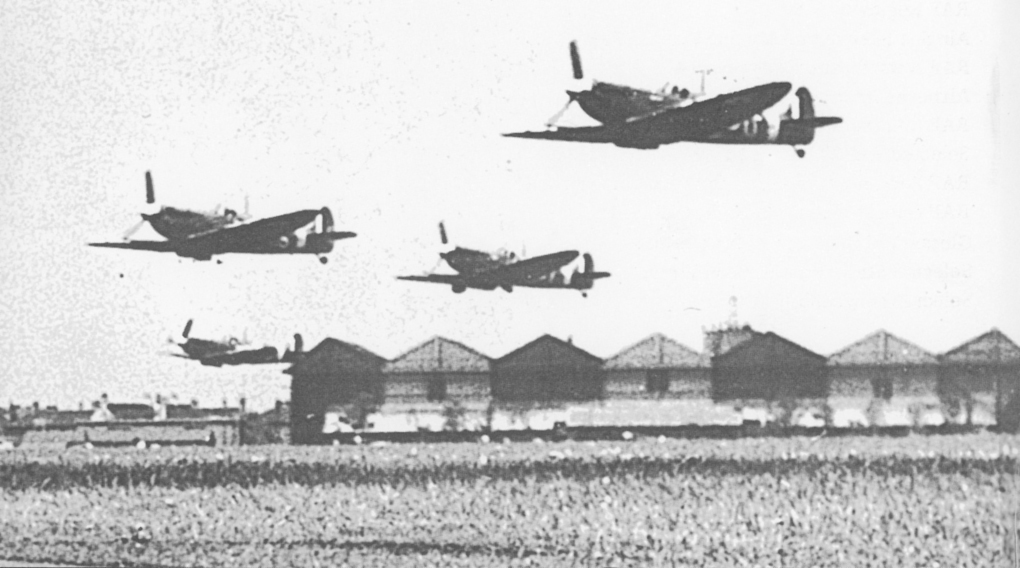
Contents
When, in 1939, the Royal Air Force girded its loins for war with Germany for the second time, it was very much a junior Service when compared with the British Army and the Royal Navy, having only in that same year come of age by celebrating its 21st birthday on 1 April. Though young in years the Third Service was certainly not lacking in traditions of loyalty, courage and superb devotion to duty; nor had those interim years 191939 been spent in idleness or lotus-eating. Every day of those 20 years of so-termed peace had seen some element of the RAF engaged in operational warlike activities at one or more outposts of the British Empire or other areas of the globe; operations which were seldom publicised (even today) but which accumulatively claimed no small toll of RAF casualties. Yet for most of those years the RAF was much neglected by its political masters indeed, its very existence as a separate Service had been a bone of high contention between its brother fighting Services, and the RAF had been very much a Cinderella between two great Ugly Sisters in terms of financial support and governmental comprehension of its huge potential significance.
For the first of those two decades the infant RAF, due solely to lack of adequate financing, had little option but to fulfil its many, varying duties with obsolete aircraft of 191718 vintage, and equally outdated equipment. At the Armistice of November 1918 it had been the worlds first independent (of Army and Navy control) air service, and incidentally the largest in numerical context. Reduced to a tenth of that overall strength by 1920, the peacetime RAF remained virtually static as far as firstline aircraft and armament were concerned until the early 1930s, when the first serious moves were implemented by governments to rearm and modernise the Service. Though these expansion plans continued to be modified from time to time, at least the basis of the future RAF was established, with plans for an eventual bombing force equipped with twin-and four-engined truly heavy bombers, and a metropolitan fighter defence to receive modern eight-gun monoplane designs. The other prime operational aspect, epitomised by Coastal Commands role of protection of the UKs vital import shipping supply lines, still remained glue-footed in the context of up-dating, however sufficient financial provisioning was still unprovided. Thus, when Britain and other European countries tottered on the very brink of all-out war with Nazi Germany in September 1938, it was a sobering fact that the RAFs operational strength and capabilities for engaging in any such conflict were, to put it mildly, doubtful if not actually insignificant.
If their aircraft were patently outdated, or barely on a par with Luftwaffe counterparts then, the air and ground crews of the RAF were of high quality; thoroughly trained and deeply committed to their chosen professions. They were in the main products of Trenchards visionary proposals 20 years before for his air force; men nurtured at Cranwell, Halton, Cosford, Flowerdown and Eastchurch et al mingled with direct-entry regulars, and all steeped in RAF lore and tradition. Every man had been a volunteer on enlistment the prewar RAF had no pressed men in its ranks. On their shoulders fell the onus of responsibility for prosecuting the RAFs war during 193940 particularly, and thereafter leading and guiding the huge wartime influx of duration-only airmen in RAF ways and means of waging war in the air. Inevitably, perhaps, such prewar stalwarts formed a high proportion of the Services early casualties in France and the epic Battle of Britain in 193940; men whose inculcated experience was to be sorely missed until wartime-trained men could fill the gaps. Fortunately, many of the latter quickly proved to be of equal quality and prowess, and even embellished the reputation of their forebears.
Of the RAFs actual operational efforts throughout the war, the following chapters and statistics will, I hope, give ample evidence. Certainly, my overall intention in this book has been to provide a ready reference form of war record for the RAF during the fateful years 193945. Naturally, it would be impossible to include literally every facet and statistic of such a gigantic subject within the necessarily limited parameters of one slim volume. However, I have attempted, at least, to present the skeleton framework, with some of the more important flesh and bones attached here and there. Equally, certain sections of this book have been included in the hope of recreating the authentic atmosphere of those years. A third purpose in compilation has been hopefully to dispel the occasional myth or legend so firmly believed still by latter-day students, historians, and would-be authors of the overall subject. Perhaps now a forlorn hope admittedly writers and broadcasters will no longer refer to hangers when they mean hangars, or aircraftsmen when the gen title is aircraftman, etc.
One aspect should be emphasised. War is not glamorous, despite the efforts of novelists and Hollywood film writers to present it as such. Life in the RAF during 193945 certainly had no glamour; for the vast majority of men and women who served in RAF blue it was a period of deprivation, separation from kith and kin, too often barely civilised living and working conditions, routine drudgery. For those men serving on a regular engagement it may have been a vocational life, a readily accepted epitome of their raison dtre as defenders of the realm; but to many wartime-enlisted men and women their war was a period of hazard and, more usually, boredom and frustration. There were, of course, high spots too comradeship, occasional triumphs over daunting circumstances, and the ever present morale-sustaining esoteric brand of RAF twisted humour. Indeed, any summary of RAF life then might be contained in that classic RAF saying If you cant take a joke, you shouldnt have joined
Chaz Bowyer
Norwich 1996
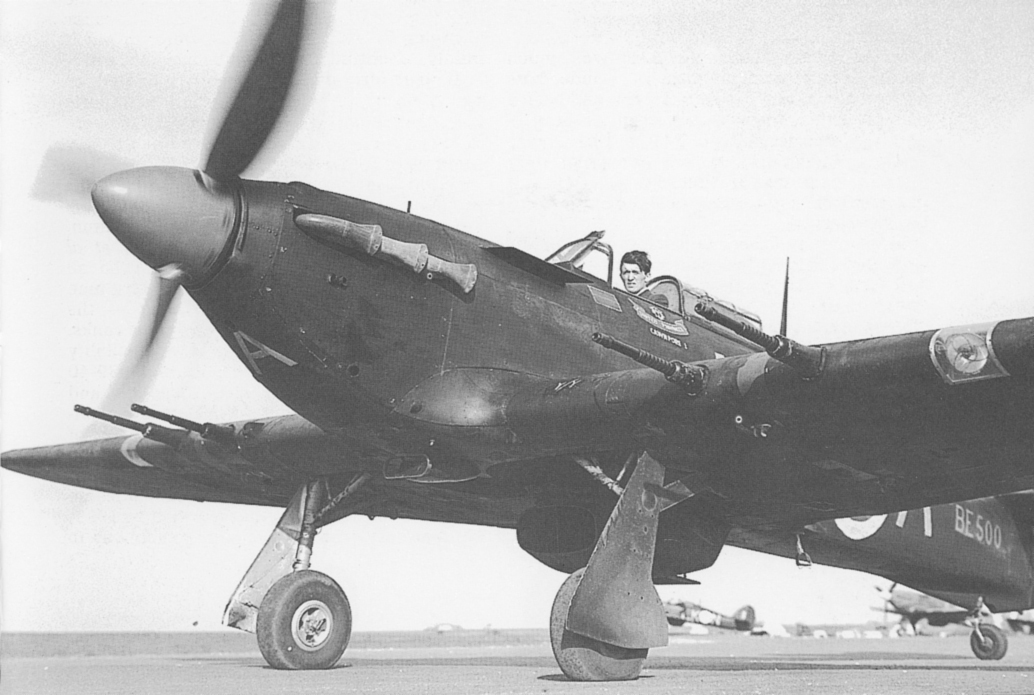
and Organisation 193945
As a monarchy the United Kingdom of Great Britain has always invested ultimate command authority in its reigning sovereign. In 193945 this was HM King George VI, who held the ranks of Marshal of the Royal Air Force and Air Commodore-in-Chief, Auxiliary Air Force; both ranks in his particular case dating from 11 December 1936. To assist the King in RAF matters he had, in 1939, a Personal Aide-de-Camp (AVM HRH The Duke of Gloucester), a Principal Air Aide-de-Camp (ACM Sir Hugh C. T. Dowding), and two Air Aides-de-Camp (Grp Capt D. F. Stevenson and The Hon R. A. Cochrane). Immediately subordinate to HM The King was the Air Council, which in November 1939 comprised:
President
Secretary of State for Air (Sir Kingsley Wood, MP)
Vice-President
Parliamentary Under-Secretary of State for Air (Capt H. H. Balfour)
Next pageFont size:
Interval:
Bookmark:
Similar books «The Royal Air Force, 1939-1945»
Look at similar books to The Royal Air Force, 1939-1945. We have selected literature similar in name and meaning in the hope of providing readers with more options to find new, interesting, not yet read works.
Discussion, reviews of the book The Royal Air Force, 1939-1945 and just readers' own opinions. Leave your comments, write what you think about the work, its meaning or the main characters. Specify what exactly you liked and what you didn't like, and why you think so.

